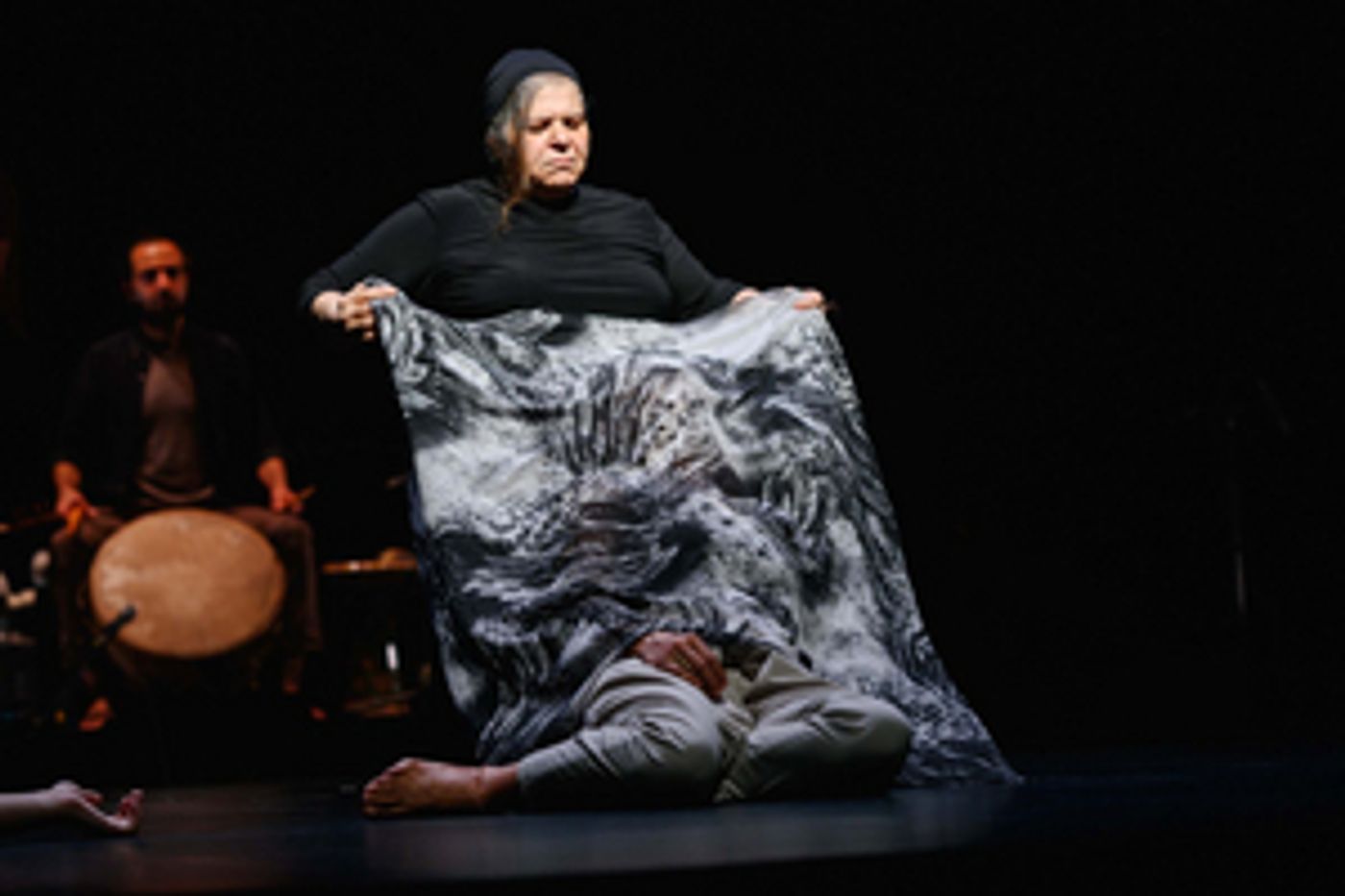Review: The Festival d'Avignon Presents DU TEMPS OÙ MA MÈRE RACONTAIT By Ali Chahrour
The band is not only an artistic foundation of this work, it also rocks.

One of the most famous images of 20th Century Theatre is that of Brecht's Mother Courage who, when told she needs to remain incognito when her son is shot, offers a silent scream. In Ali Chahrour's Du Temps Où Ma Mère Racontait, now in performance at Avignon Université's Cour Minérale, Laïla Chahrour similarly unhinges her jaw into a scream, though it's anything but silent. Undergirded by musicians playing behind her, she cries into the audience, her voice rising into the starry sky. In the face of all the tragedy she has explored with her family, it is a resonating moment of catharsis.
Ali Chahrour's aunt Fatimah lives in Lebanon with her children and her Syrian husband. However, they are not able to inherit her Lebanese citizenship. From time to time they go to Syria in order renew their papers. One year, Hassan, her son, doesn't return. Fatimah is informed that he is dead, killed in a Syrian prison. She holds onto hope, searching for him throughout the Mideast. She searches for him until she dies of lung cancer in 2018. According to Chahrour "A post-mortem autopsy would have uncovered that her heart was no longer lodged between those motherly ribs."
Laïla Chahrour (Ali's cousin), and Laïla's son Abbas, join choreographer Ali Chahrour on stage. Abbas joined the fighting in Syria in 2018. When he returned home, Laïla made sure he'd never leave again. They are backed by the band Two or The Dragon. This band consists of Abed Kobeissy on a processed Buzuq, and Ali Hout on drums. Hala Omran joins in, singing folk songs. Their work ends with the oldest lullaby, an ancient Sumerian text. Though the last word of the production goes to an audio recording of Fatimah and Hassan singing together, only a few days before his disappearance. It is evidence that there were better times for this family, and this work is their search to recover them.
Despite his headline focus, choreography by Ali Chahrour isn't the central artistic aspect of the piece. Moments of pure movement, while not detracting, don't resonate in the same way as moments of more social dance. The movement is at its best when, like the folk music, it belongs to the on stage community. Guillaume Tesson's lighting design gives the stage a warm amber glow. The shadows of the performers loom far off stage onto the walls of the university. On stage, we have the individuals looking for a specific person; off stage we see the historic trial of mothers attempting to rescue their children. Sound design by Woody Naufal held its own against the Avignon wind.
The band is not only an artistic foundation of this work, it also rocks. The drums, buzuk, and Omran's powerful voice create an atmosphere between a rite and a rock concert. Admittedly, with this much satisfaction, at times the piece comes off as voyeuristic. How much of this family's grief must be displayed? Is the public's possible catharsis socially active in any meaningful way? Though the joy of the mother able to dance with her son she helped rescue from war and the family's personal faith in Hassan's recovery ease these concerns.
Photo Credit: Christophe Raynaud de Lage
Reader Reviews
Videos

